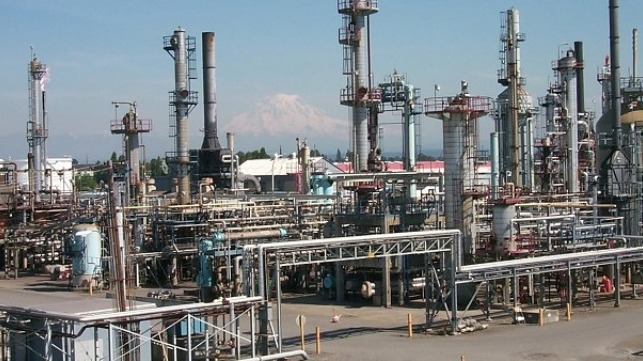Marpol: What Will Compliance Look Like in 2020, and Beyond?

The IMO in 2008 outlined plans for a reduction in the global maximum limit of sulfur content in any fuel oil used by a shipping vessel, reducing it to 0.5 percent from 3.5 percent. In 2016, following the 70th session of the Marine Environment Protection Committee in London, the 87 parties present decided to impose the global cap in 2020.
The IMO’s decision is based on the conclusion of the Assessment of Fuel Oil Availability, carried out on its behalf by environmental consultancy CE Delft. This report concluded that: “In all scenarios the refinery sector has the capability to supply sufficient quantities of marine fuels with a sulfur content of 0.5 percent m/m or less and with a sulfur content of 0.1 percent m/m or less to meet demand for these products.”
Many market participants expect that the bulk of the task in meeting the new sulfur cap will be shouldered by the refining sector and made possible by the amount and type of refining capacity already in place or being added.
Argus’ view is somewhat different. We expect there to be a significant dislocation in terms of bunker fuel use and pricing with the introduction of the new sulfur cap in 2020. For some refiners, the new environment will offer a significant opportunity, for others it will mean an even fiercer struggle for survival. In addition, we expect the bulk of the investment required for meeting the new standard to fall not on the refiner but on the shipowner.
The new IMO rules will favor complex refineries, so most U.S. refiners are well positioned for 2020. Residual fuel oil accounted for only 2.5 percent of U.S. refinery output last year, down from 4.5 percent in 2000. U.S. refiners have installed considerable coking and hydrocracking capacity to reduce high-sulfur fuel oil output, and are processing lighter crudes than in previous years owing to the boost in shale-based domestic production. With sufficient upgrading capacity in place, diesel rose to 29 percent of output in 2017, from 23.1 percent in 2000.
But U.S. refineries still produced 325,000 b/d of high-sulfur residual fuel — fuel containing more than one percent sulfur — last year. The regions with the largest high sulfur output were the Gulf coast – 166,000 b/d and the west coast – 93,000 b/d. The U.S. also produced 54,000 b/d of residual fuel oil with less than 0.31 percent sulfur, which would meet the 2020 marine fuel sulfur cap, and 55,000 b/d of fuel oil with sulfur content in the range of 0.31-1.00 percent.
How significant is the impact of Marpol 2020?
The issue of sulfur emissions from vessels at sea may seem remote to most, but it has the potential to hit hard and wide. A global 0.5 percent cap means that shippers currently using high-sulfur fuel oil (HSFO) will have to find an alternative or invest in compliance measures.
Based on our forecasts, this could affect the consumption of as much as 185mn t/yr of fuel oil, equivalent to almost half of global production. So this is a big deal, both for the refiners that produce fuel for marine bunkers and for the estimated 45,000 vessels that currently consume HSFO.
Argus Media has produced a full commentary discussing enforcement of the IMO 2020 rule in connection with the upcoming Argus Fuel Oil Summit, being held October 14-16, 2018 in Miami, Florida. To download your copy click here. To learn more about the Argus Fuel Oil Summit click here.
The opinions expressed herein are the author's and not necessarily those of The Maritime Executive.
